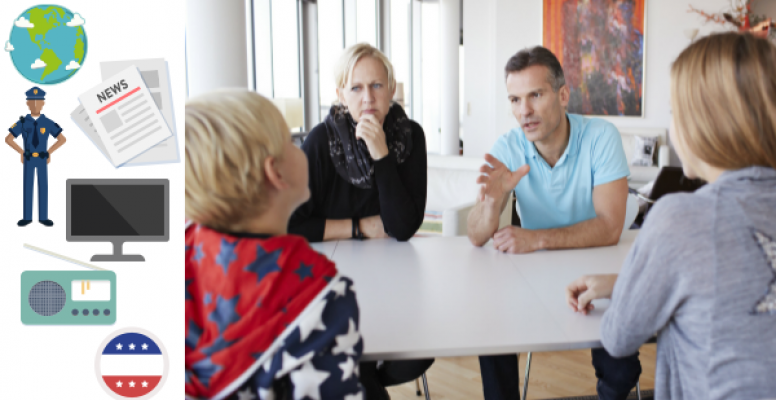
Talking to Teens about Violence and Tragedies
Written By: Ann Stillingfleet, ACS Clinical Intern, Adolescent Substance Abuse Treatment and Community Counseling Programs
Every week the news brings stories of seemingly senseless and random acts of violence — either globally or locally. How do we talk to our children, especially our teens, about these events when the source of much of what they “know” is sound bites on social media, hasty responses to initial shock or horror, misconceptions or assumptions? How do we have the conversations we need to help our children think more effectively, process more healthily, see the “global” picture and ultimately tap into our innate capacity for compassion? It is tempting when we ourselves may be feeling frightened, confused or defensive, to deny responsibility and be silent. However, it is imperative that we allow for open discussions with our kids to help them feel safe, gain a more realistic perspective and to nurture an open minded, open-hearted attitude to both what we witness, the feelings we experience, and what news media presents to us.
It is important that you not force conversation but instead listen for fears, misconceptions and questions that teens might have. Starting a conversation by asking them what they have heard or what conversations they’ve participated in about an event is a good place to begin. Kids will come to us when they know we are open, available, safe and non-judgmental.
When or if you hear fear, normalize their feelings and let your child know they are not alone, that many adults are also afraid and confused — that people are working hard to keep them all safe and that while the focus may be on the devastation, there are also many stories or heroism and survival.
As a family, gather facts that describe the geographical, social or political reality to help construct the perspective that your family is safe from harm. Once kids feel safe, they are more open to conversations that address possibility versus probability of other events happening. Knowing that they are immediately safe also allows for teens to understand the business of media versus the need to be informed, addressing multiple perspectives and stories that emerge from these events. Seeing certain images repeatedly can be very upsetting; the brain interprets this as re-occurrence and this can be traumatizing. While it is important to gather information, it is also important to guard against saturation and emotional overload.
Conversations that further empathy and compassion for the victims and witnesses of violence, as well as the communities affected by the aftermath of tragedy, can open up discussion about taking constructive action to bring healing. Many people find themselves mobilized into action to volunteer in some capacity or support through donations; but one of the most difficult, and most essential forms of action, is facilitating and promoting healthy dialogue that allows for expression of concerns, hurts and fears. Our teens need this more than ever if this generation is to begin resolving the issues that lead from injustices and often lead to the very acts of violence we struggle to make sense of every day.
